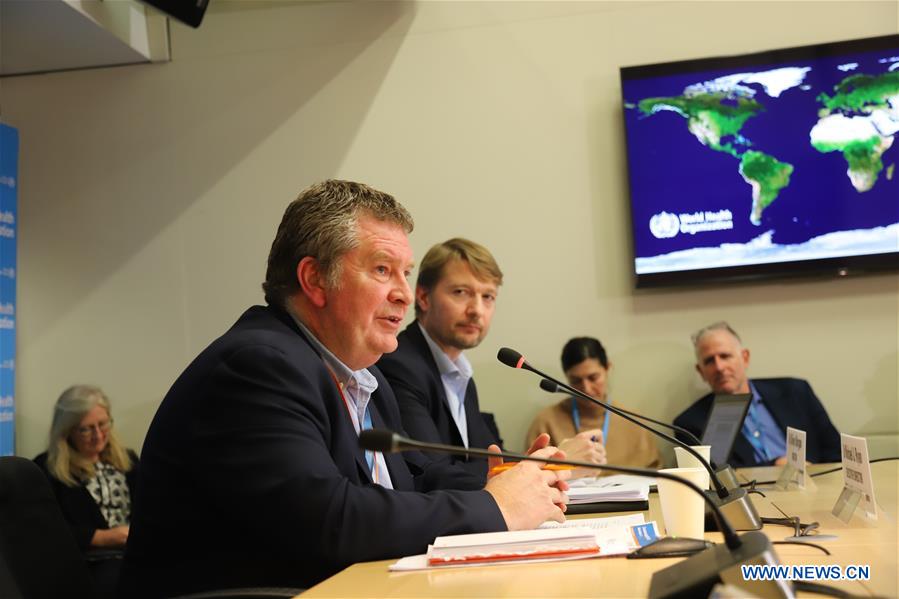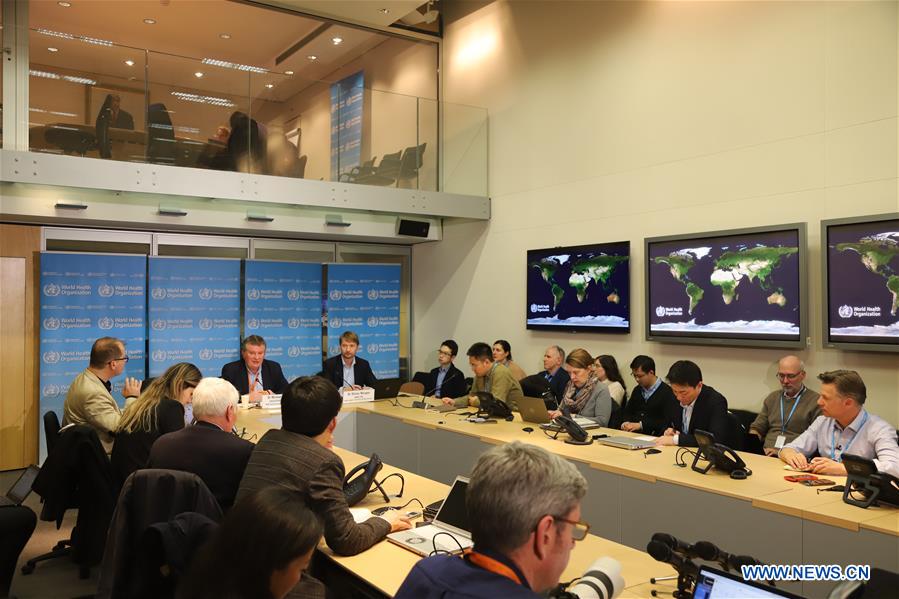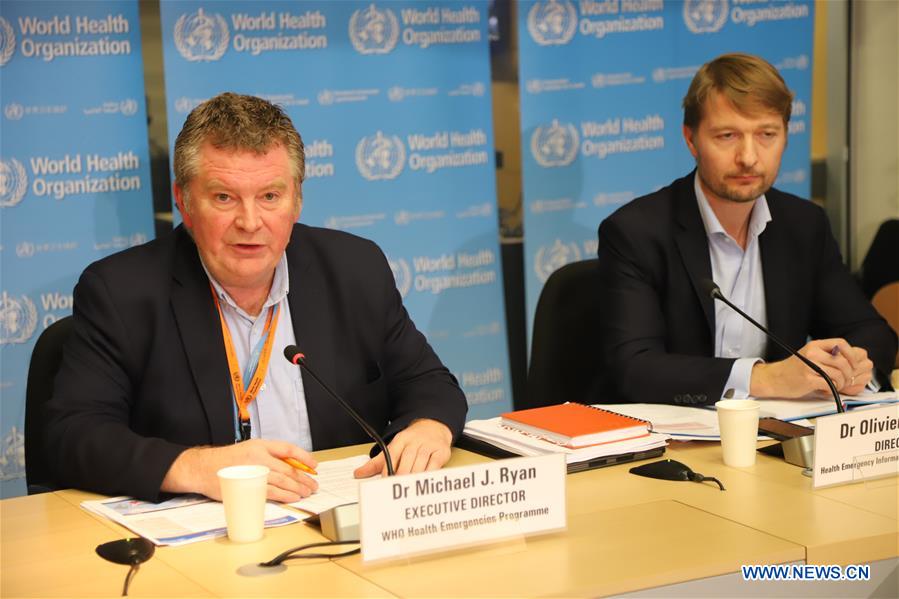
Michael Ryan, executive director of the World Health Organization (WHO) health emergencies program, speaks at a press conference in Geneva, Switzerland on Feb. 13, 2020. The surge in the number of new confirmed cases in China came after a change to include any suspected cases with pneumonia-related computerized tomography scan results, rather than relying on laboratory tests to confirm cases. The figure sounds gloomy, but life is the top priority. Based on more knowledge of the virus, the revised diagnostic procedure aims at helping patients get treatment more quickly and improving the chances of recovery. The spike "does not represent a significant change in the trajectory of the outbreak," as Michael Ryan has said. (Xinhua/Chen Junxia)
BEIJING, Feb. 14 (Xinhua) -- The sharply higher number of 15,152 new confirmed cases of novel coronavirus infection on the Chinese mainland reported Thursday might have surprised some people, and caused unnecessary skepticism about China's epidemic data transparency.
It is true that there is complexity in verification and the severity of the epidemic remains to be seen, but there is no need or reason to doubt the country's information transparency as some White House official did.
When there is a lack of mutual trust, and even overreactions are made, how can there be cooperation in the fight against the epidemic, a common enemy of mankind?
China treasures "seeking truth from the facts," emphasizing the need to explore the facts and make sure all decisions and judgments are made based on reality. It requires being honest with the facts and regarding facts as the ultimate criteria for assessing the correctness of policies.
Instead of concealing the scale of the epidemic, the country has been making all-out efforts to learn and release every single fact about COVID-19.
The surge in the number of new confirmed cases came after a change to include any suspected cases with pneumonia-related computerized tomography scan results, rather than relying on laboratory tests to confirm cases.
The figure sounds gloomy, but life is the top priority. Based on more knowledge of the virus, the revised diagnostic procedure aims at helping patients get treatment more quickly and improving the chances of recovery. The spike "does not represent a significant change in the trajectory of the outbreak," as Michael Ryan, executive director of the World Health Organization (WHO) health emergencies program, has said.
Since the outbreak, China has adopted an open, transparent and highly responsible attitude to safeguard national and global public health security.
The government holds daily briefings, updating the numbers of new confirmed cases, deaths and recoveries in detail.
China has reported the epidemic information to the WHO and relevant countries and regions at the earliest time possible. A China-WHO joint mission will have in-depth communication on the prevention and control and come up with advice for China and other affected countries.
China is also quick to identify its shortcomings in containment efforts, such as emergency management, information collection and feedback. It shows the courage of truth-seeking and determination to learn lessons from the outbreak to enhance its governance system and capability.
Fighting the coronavirus is a global battle. It needs openness, transparency and mutual trust. Skepticism, panic and overreactions could only undermine the global joint efforts and make things worse, medically, socially and economically.


Michael Ryan, executive director of the World Health Organization (WHO) health emergencies program, speaks at a press conference in Geneva, Switzerland on Feb. 13, 2020. The surge in the number of new confirmed cases in China came after a change to include any suspected cases with pneumonia-related computerized tomography scan results, rather than relying on laboratory tests to confirm cases. The figure sounds gloomy, but life is the top priority. Based on more knowledge of the virus, the revised diagnostic procedure aims at helping patients get treatment more quickly and improving the chances of recovery. The spike "does not represent a significant change in the trajectory of the outbreak," as Michael Ryan has said. (Xinhua/Chen Junxia)


Michael Ryan, executive director of the World Health Organization (WHO) health emergencies program, speaks at a press conference in Geneva, Switzerland on Feb. 13, 2020. The surge in the number of new confirmed cases in China came after a change to include any suspected cases with pneumonia-related computerized tomography scan results, rather than relying on laboratory tests to confirm cases. The figure sounds gloomy, but life is the top priority. Based on more knowledge of the virus, the revised diagnostic procedure aims at helping patients get treatment more quickly and improving the chances of recovery. The spike "does not represent a significant change in the trajectory of the outbreak," as Michael Ryan has said. (Xinhua/Chen Junxia)


